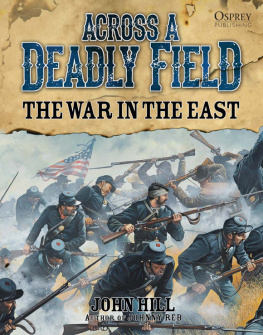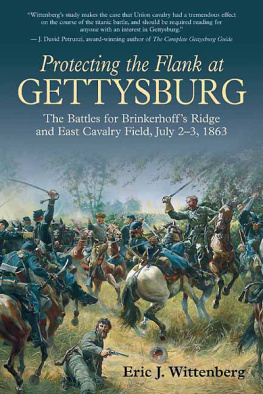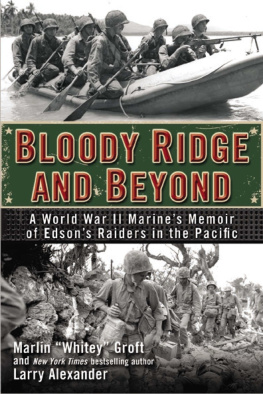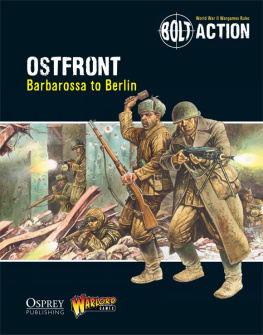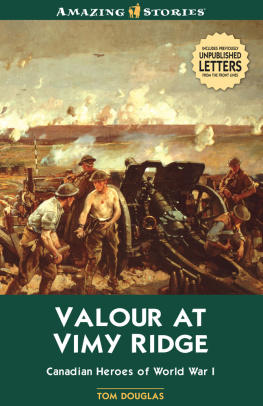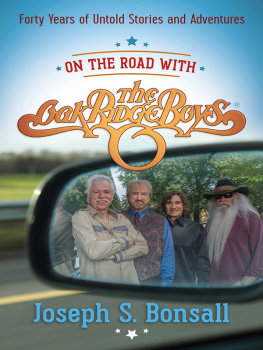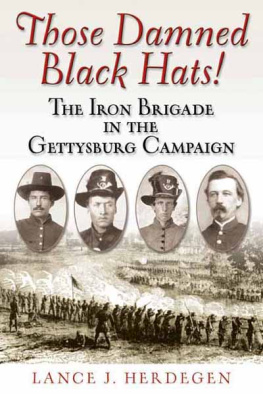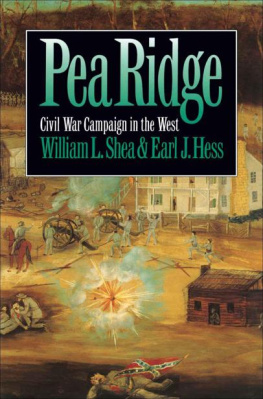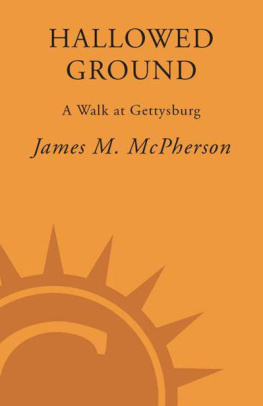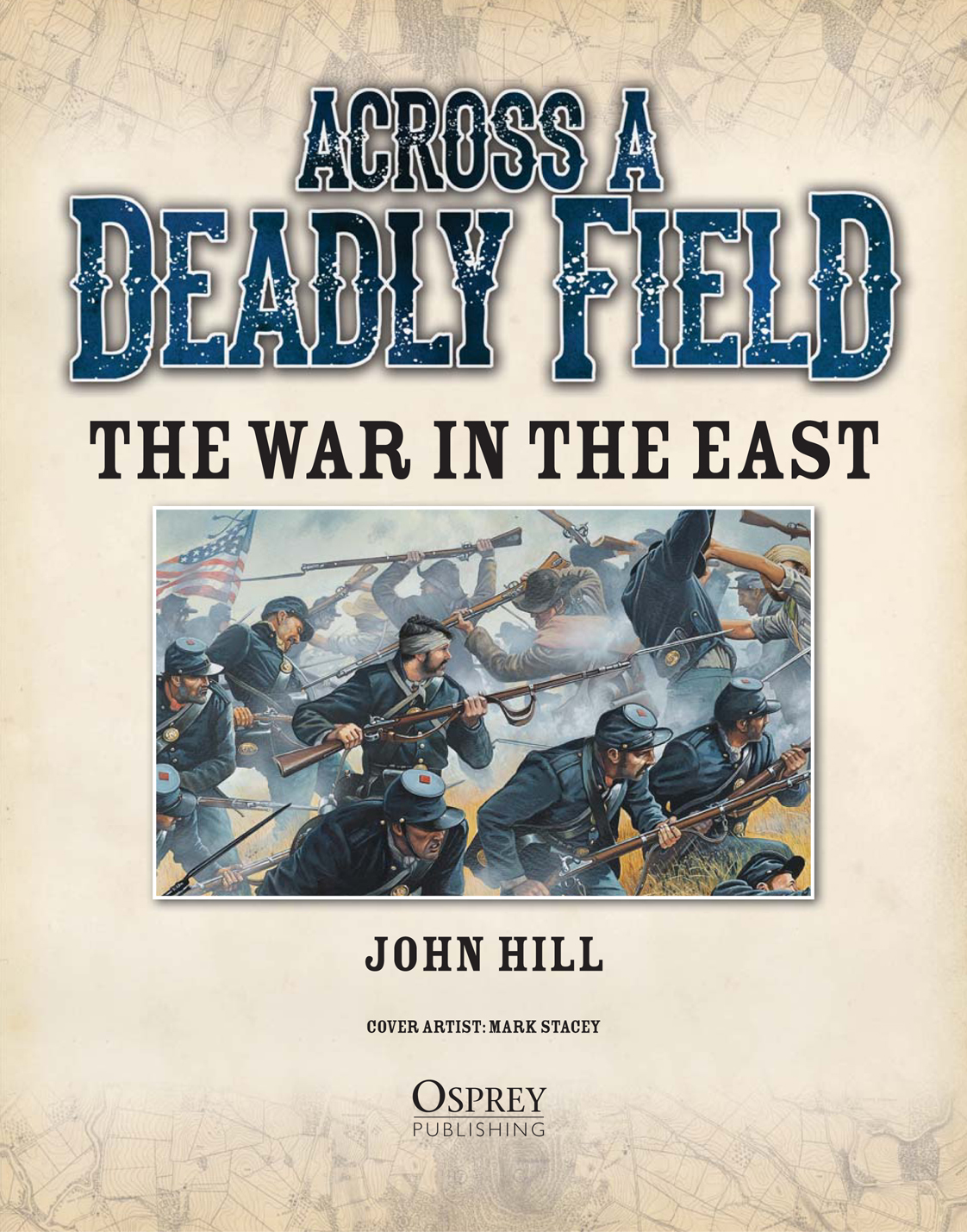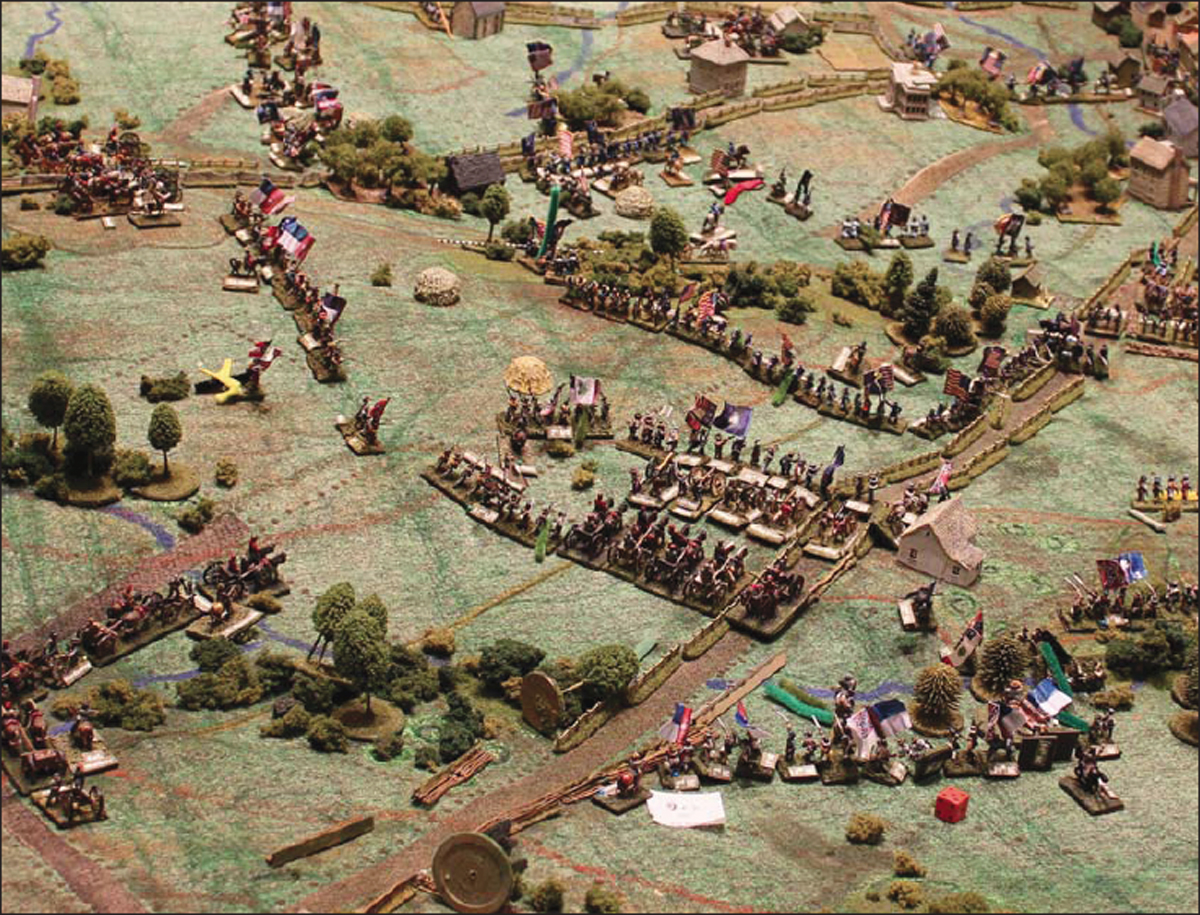CONTENTS
ACKNOWLEDGEMENTS
As was the case with the Across a Deadly Field wargame rules, this book and its scenarios could not have been developed, play-tested and refined without the help of many others. First among many would be my wife, Luella a true wargame widow who not only put up with my obsession with the battles of yesteryear, but contributed by meticulously and tediously calculating all the point values for all the units that were at or could have been at the first day of Gettysburg. For you guys that like to create point-based civil war armies, thank her, not me.
As I have said many times, no one can create this stuff by themselves. It takes the insights and hard work of many talented and dedicated individuals. Dean West with his encyclopaedic knowledge of the horse and musket period was relentless in his determination that every little historical detail and nuance was correctly portrayed. His fanatical devotion to historical accuracy clearly shows in the two 1864 Shenandoah Valley scenarios he created for this book. But history is more than a myriad of tactical details. It is flavor and feel, and Duke Seifried the grandmaster of miniature gaming was equally persistent in his constant insistence that while detail is good, it must never overshadow the flow, the flavor and the feel of the game, as that is what makes a game fun. If it isnt fun, then it wont be played and if it isnt played, then it isnt a game point taken.
Patrick LeBeau, John Hill and Dean West present The First Day of Gettysburg at Nashcon 2014. (Chris Ward)
ADF and its scenarios are not just history, it is a game, and a game requires rules that have to clearly convey the designers intent in a manner that allows the gamers to creatively use all the historically correct tactics of the period while at the same time reining in the use of historically inappropriate game mechanics. Those people that can understand the designers intent and can burrow into the written rules to make sure that everything that is good is preserved and everything that is bad is kicked out are a rare breed indeed. They are the rule makers and rule breakers. I was most fortunate to have the talents of four of the best P. J. ONeill, Patrick LeBeau, Todd Davis and Cory Ring. These guys would toil through every play test version of the rules, every movement and combat chart, and multiple rewrites of all of that, to make sure that the how to play was crystal clear in a manner that even the most diabolical of rule lawyers could not pervert. Then, to make sure the game worked as it should, they would present and run demo games at some of the major conventions. If there are any legal loopholes left, it is not their fault but mine, as I would inevitably do one more rewrite and inadvertently undo the rule thoroughness that they worked hard to put into the game.
But good miniature rules are much more than a thoroughly proofread and cross-referenced listing of what to do and what not to do. All that has to be there, but they must also convey a sense of visual spectacle. The rule book has to reflect the color, the drama and the wow factor that makes historical miniature wargaming so much more than just good history. And to do that you need expert graphics, which includes everything from clear diagrams of play to easy-to-read scenario maps and perfect tabletop photography. Those visual elements are what makes you want to pick up the paintbrush and crank out another regiment. Game graphics are no easy task it is hard and incredibly time intensive, requiring a wide set of both artistic and technical skills. So, as you thumb through this book and become inspired by the graphics and pictures, thank Todd Davis, P. J. ONeill, Patrick LeBeau and Dean West along with Alan Sheward, Chris Ward, Doug Kline, Malcom Johnston, Scott Mingus, and Cory Ring who also deserves a special thanks for his extensive pre-release promotion of the ADF rules and scenarios on his Cigar Box Battles website.
Finally, I have to salute the most under-appreciated group of contributors to this and any wargame the long suffering playtesters. These are the guys that willingly sign up to play a game that they know at this stage is almost certainly half-baked and that the rules will probably change in mid-game. Often, in terms of fun, it would be like volunteering to be the first over the top at the Somme. These are the true grognards who will go down whatever path the wargame designer sets for them. And I sincerely apologize if I cannot remember all of them but some of those that were willing to do this again and again were Eric West, George Miksad, Stephen Geisinger, Justin Crouthamel, Kermit Hilles, Norris Darrall, Grant Daniels, Robert Hoy and Dana Lombardy. To any others I may have missed, my heartfelt thanks and appreciation.
John Hill
AN INTRODUCTION TO THE EASTERN SCENARIOS
FOR THE CONFEDERACY TO WIN THE WAR...
For the Confederacy to win the war it had to do more than fight defensive battles, as winning those only prolonged the war and a long war inevitably would be a war of attrition, which was a war the South could not win. Robert E. Lee saw that as clearly as did Ulysses S. Grant. After Lees greatest victory of maneuver, the Battle of Chancellorsville, the South rejoiced but Lees emotions were much more measured. A larger host had indeed been forced to retreat in confusion, but the actual dead and wounded from the battle was just about the same for both sides somewhat more than 10,000 for each and the Virginia countryside continued to became even more depleted. To Lee, it was becoming clear that to win the Confederacy would have to break the Unions resolve to continue the war, as only that would undermine the political power base of the Lincoln administration. Then, and perhaps only then, would the North be willing to consider and possibly accept the division of the country. The South could and did win some impressive victories in the West such as Chickamauga, which left a Union Army routed and besieged in Chattanooga but such victories were not on the doorstep of Washington and consequently did not produce the required political shock effect. At Chattanooga, the Union merely brought in a different general Ulysses S. Grant and provided the resources to lift the siege. For the Union, it was business as usual.
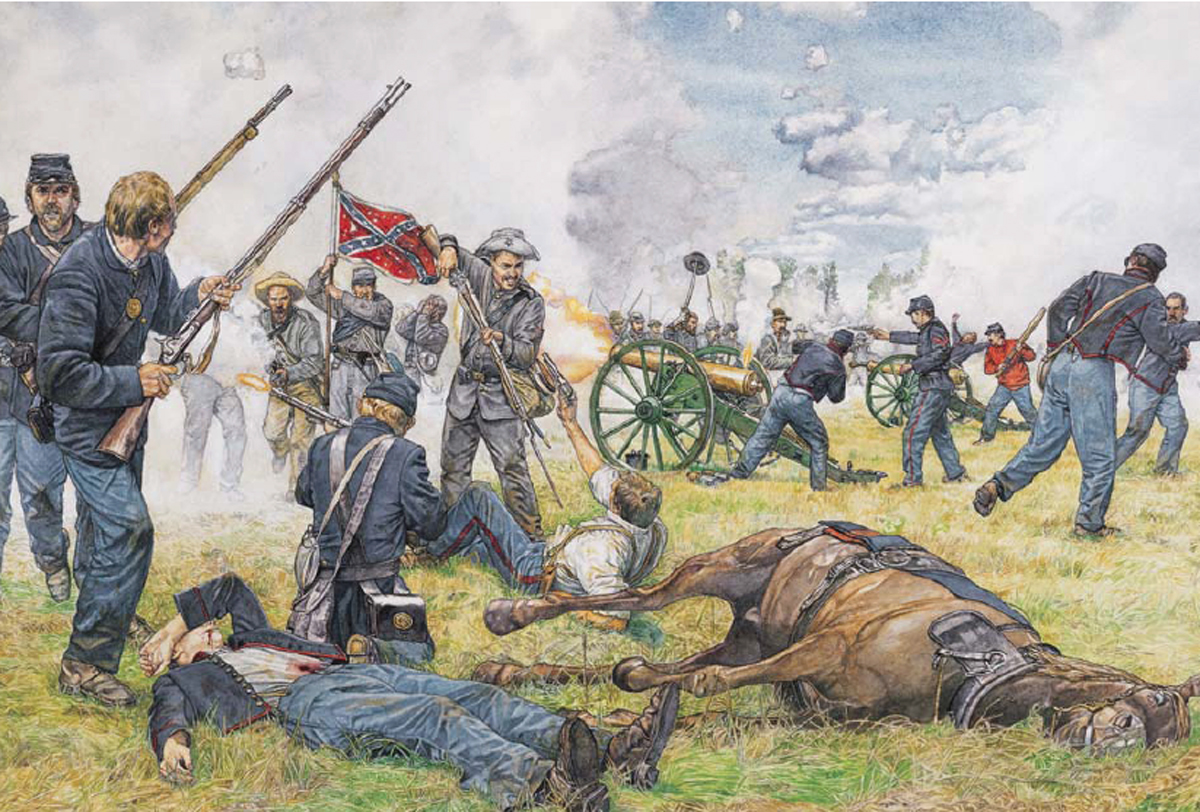
The charge of the 4th Texas at Gaines Mill, June 27, 1861, by Stephen Walsh Osprey Publishing Ltd. Taken from Campaign 133: Seven Days Battles 1862.
The Confederates mass their guns on Herr Ridge and Oak Hill in preparation for a coordinated assault. (Patrick LeBeau & Chris Ward)
For the South to win and to force the Union to accept a political separation would require the humbling of the Norths premier military force, the Army of the Potomac, in a manner and location that would produce a political shockwave in Washington sufficient to fracture the administrations congressional support to continue the war. For the Confederacy, this created the conundrum that while the North could eventually win the war by winning in the West, the South could only win it by winning in the East, and winning it in a manner that would be perceived as threatening Washington itself. This fact was not lost on President Lincoln and was a major factor in his almost paranoiac insistence that the first mission of the Army of the Potomac must always be that of shielding Washington from any possible Confederate threat. While Lincolns fixation on protecting Washington frequently made questionable military sense and resulted in a number of embarrassing setbacks, it did make perfect political sense, as Lincoln, perhaps more than some of his generals, instinctively knew what was at stake.

